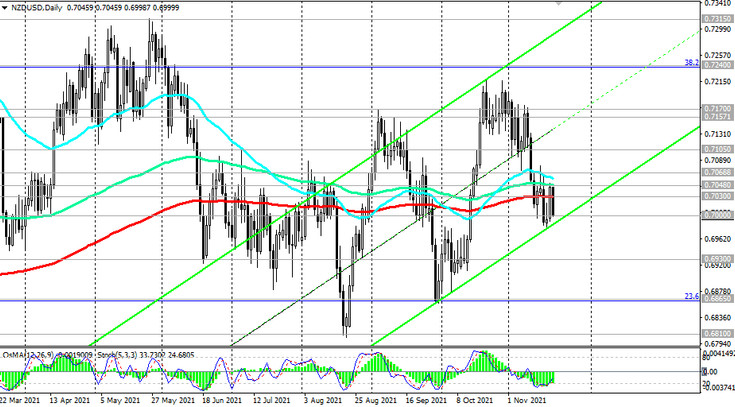As follows from the report of the Bureau of Statistics of New Zealand published earlier this month, in the third quarter the unemployment rate in New Zealand fell to 3.4% from 4.0% in the previous quarter, while the employment rate increased by +2.0% (against growth by +1.0% in the 2nd quarter, +0.6% in the 1st quarter of 2021). The decline in unemployment and the rise in the employment rate are positive for the NZD. The rise in employment has a positive effect on consumer spending, which stimulates economic growth, while the decline in unemployment leads, among other things, to higher wages, also having a positive effect on consumer spending. Domestic consumption and consumer spending in many economically developed countries are one of the most important sources of growth in the country's GDP.
As a result of the meeting ended on October 6, the management of the Reserve Bank of New Zealand, as you know, decided to raise the interest rate (by 0.25% to 0.5%), for the first time in the last 7 years. This decision was prompted by the desire of the RBNZ leadership to curb the growth of inflation and house prices (over the past year, the median house price rose by about 30%, and this growth was one of the strongest in economically developed countries). In August, the RBNZ predicted that the key rate would rise to 1.6% by the end of 2022, and to 2.0% in the second half of 2023.
Now market participants will follow the RBNZ meeting, which will take place next Wednesday (the bank's decision on the rate will be published at 01:00 GMT). It is possible that the leaders of the RBNZ will again decide to raise the interest rate. This view is supported by inflation expectations published on Thursday by the Reserve Bank of New Zealand. As a result of the RBNZ survey of economists and industry business leaders, consumer price index (CPI) expectations rose to 3.7% for the year ahead, and to a 13-year high of 2.96% for the next two years. The RBNZ believes that the growth rates of the New Zealand economy and inflation remain high enough, which creates conditions for further tightening of monetary policy. The target range for consumer inflation set by the RBNZ is 1.0% -3.0%, and a sharp rise in inflation expectations almost guarantees a 25 basis points increase in interest rates at the next RBNZ meeting, economists say.
At the time of this posting, NZD / USD is traded near the 0.7000 mark, declining since the opening of today on the back of the strengthening US dollar (at the time of publication of this article, the DXY dollar index futures are traded near the 95.90 mark, 30 pips above today's opening price, maintaining positive dynamics and potential for further growth).
However, NZD / USD remains in the zone of long-term support levels 0.7000 and 0.7030, above the key support level 0.6865 (see Technical Analysis and Trading Recommendations).

Unlike other major competitors of the US dollar, the New Zealand dollar is the most successful in opposing it. The main positive driver of the dynamics of the New Zealand dollar remains high growth rates of the national economy (in the 2nd quarter, New Zealand's GDP grew by +17.4% on an annualized basis after growing by +2.4% in the 1st quarter of 2021), a low level the incidence of COVID-19, as well as expectations of further tightening of monetary policy by the country's central bank (some economists do not rule out that next week the rate will be raised by 50 basis points at once).
It is most likely that after the RBNZ decision to raise the interest rate, the NZD will strengthen, while the NZD / USD pair will rise. Nevertheless, unexpected decisions and statements by the leaders of the RBNZ regarding the future prospects of monetary policy are not ruled out. Recall that at once after a similar decision to raise the rate at the October meeting of the RBNZ, the New Zealand dollar fell (probably, market participants expected more decisive actions from the RBNZ leaders), although the NZD / USD pair rose in October, but due to the weakening of the US dollar, mostly.





